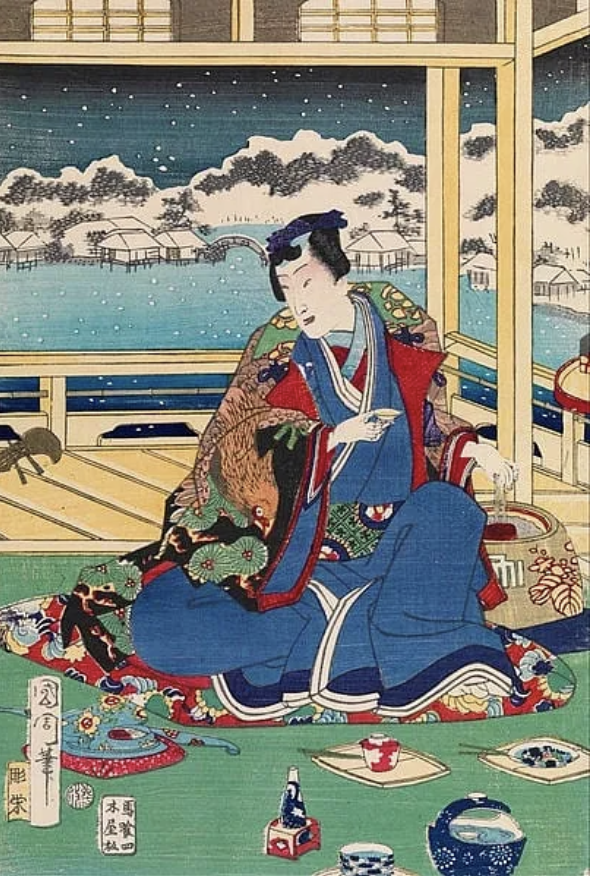
This week we finished our discussions on Buddhism by talking about the Buddha of pure land or Amida Buddha. The pure land of the Buddha is, in fact, another realm one can enter upon their death. In this realm, the Amida Buddha will instruct a person reborn in their land how to attain enlightenment. In the realm of pure land it is in fact much easier to attain enlightenment due to the fact that there are no temptations in the pure lands to have desires. Consequently, there is no karma in the realm of the Amida Buddha. Moreover, it is said that the only way to be reborn into the realm of pure land is by saying the name of Amida Buddha (J. “Nen butsu”) upon your death. If a person does say the Buddha’s name then the Amida Buddha will appear on a purple cloud to take them to be reborn in their realm. This concept makes me wonder how many people do get into the realm of Amida Buddha since probably saying the Buddha’s name is the last thing on your mind as you are dying. Also, I wonder if due to the land having no temptations if that is the reason they had a massive following as shown by them continuing this practice up to the present. Finally, I wonder how much Buddhism played a role in the life of Genji?
Interestingly, in Murasaki Shikibu’s book, The Tale of Genji, she comments on how Buddhism is related to the Tale of Genji and fiction in general. To further her point, Shikibu writes,
Yet in the last analysis these Accommodated Truths tend to the same aim as all the rest of the sutras. The difference between Buddhahood and Earthly Lust as described in the scriptures is precisely the same as that between the good and the bad qualities of fictitious characters. So, when we regard these works of fiction in the proper light, we find that they contain nothing superfluous. Thus did Genji show that romances could serve a most useful purpose.1
Shikibu illustrates with this quote that the difference between enlightenment,lust, and other forms of worldly desires are two sides of the same coin. In Shikibu’s case she refers to the two as the good and bad qualities of a fictional character. However, they are what she says are parts of a character not the entire whole. This distinction is important because it shows that if you give up desires you reach buddhahood but if you give into desires you achieve earthly lust meaning that it all depends on the character and strength of a person or their qualities. As such, when we look back on Genji’s love life you can see that it mirrors this type of back and forth between good and bad traits of him. Thus, as Shikibu says, “works of fiction in the proper light, we find that they contain nothing superfluous.”2 I feel that this idea that nothing in a fictional character is a really novel idea for a text that is more than a thousand years old. What is also interesting but a little alarming is that even though this text is a very famous text of literature that is over a thousand years old there are a lot of the same structures and storytelling used in today’s novels. Does this fact show how far we have not come or does it show the great structure found within story telling that it has not really changed in well over a thousand years?
Bibliography
“Murasaki Shikibu: On the Art of Fiction.” In Sources of Japanese Tradition, Volume One: From Earliest Times to 1600. 2nd edition, edited by Ryūsaku Tsunoda, Wm. Theodore De Bary, and Donald Keene, 201-202. New York: Columbia University Press, 2002. (PDF)
- “Murasaki Shikibu: On the Art of Fiction.” In Sources of Japanese Tradition, Volume One: From Earliest Times to 1600. 2nd edition, edited by Ryūsaku Tsunoda, Wm. Theodore De Bary, and Donald Keene, 201-202. New York: Columbia University Press, 2002.
- Tsunoda, De Bary, and Keene, “Murasaki Shikibu: On the Art of Fiction,” 202.
Leave a Reply